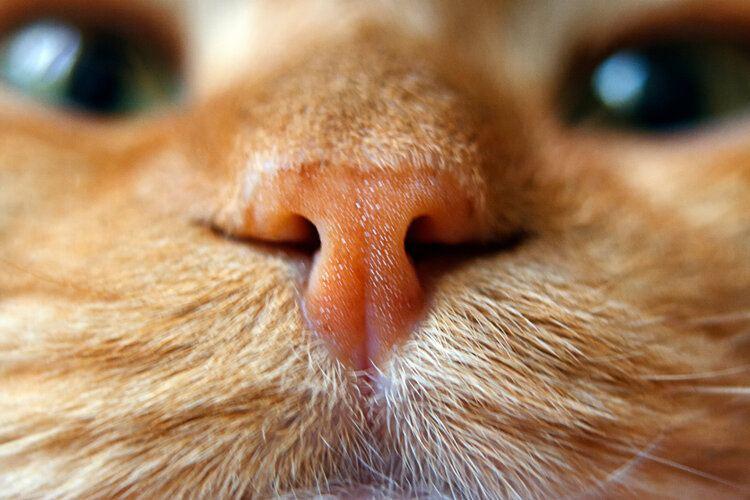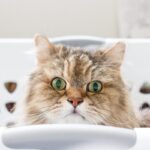When it comes to our beloved feline companions, understanding their health and well-being is a top priority for any cat owner. One common concern that many cat lovers ponder is the condition of their cat’s nose. You may have noticed that your cat’s nose can vary from wet to dry, and this fluctuation can spark questions about what is considered normal.
In this article, we’ll delve into the significance of a cat’s nose moisture, explore the various factors that can influence its texture, and provide insights into what these signals might say about your cat’s health. Whether you’re a seasoned cat owner or a new pet parent, gaining a deeper understanding of these subtle indicators can help you better care for your furry friend. So, let’s take a closer look at the fascinating world of feline nasal health and discover what your cat’s nose might be telling you!
Table of Contents
- Understanding the Importance of a Cats Nose Moisture
- Common Myths About Cat Nose Wetness Debunked
- Key Health Signals Indicated by a Cats Nose Condition
- Tips for Monitoring Your Cats Nose and Overall Wellbeing
- Q&A
- To Conclude
Understanding the Importance of a Cats Nose Moisture
When it comes to feline health, the moisture of a cat’s nose can be a key indicator of their overall well-being. A cat’s nose is typically cool and moist when they are healthy, which helps with their sense of smell. This moisture is vital because a well-functioning olfactory system plays a significant role in a cat’s ability to hunt, explore, and interact with their environment. A cat’s nose should ideally feel soft to the touch and have a slight sheen, indicating that they are hydrated and in good health. Factors influencing nose moisture include:
- Hydration: A well-hydrated cat will typically have a moist nose.
- Temperature: A cat’s nose can become dry if they are overheated or in a very hot environment.
- Health Conditions: Certain illnesses can affect moisture levels.
Conversely, if a cat’s nose appears excessively dry or cracked, this could signal underlying health issues or dehydration. However, it’s important to note that individual variations exist among cats, as some may naturally have drier noses than others. Therefore, understanding your cat’s typical baseline is crucial. In case of sudden changes in nose moisture, consider monitoring other signs of health, such as:
- Changes in appetite: Eating habits may change if they’re unwell.
- Energy levels: Less activity can indicate discomfort.
- Visible distress: Look for signs of sneezing or coughing.
| Condition | Nose Appearance | Possible Action |
|---|---|---|
| Healthy | Moist and cool | No action needed |
| Dehydrated | Dry and warm | Encourage drinking water |
| Illness | Dry, cracked, or unusually wet | Consult a veterinarian |
Common Myths About Cat Nose Wetness Debunked
There’s a common belief that a cat’s wet nose is a surefire sign of good health. However, this is more myth than reality. In truth, a cat’s nose can vary in moisture due to several factors unrelated to illness. For instance, a cat’s activity level, the humidity in their environment, and even the time of day can affect how wet or dry the nose feels. It’s essential to recognize that a wet nose does not inherently indicate that a cat is healthy, nor does a dry nose mean they are unwell. It’s crucial for pet owners to be aware of the broader context of their cat’s overall health. Here are some factors to consider:
- Environmental Conditions: A humid day can lead to a wetter nose, while dry air may dry it out.
- Physical Activity: Cats that are playing or active can have varied moisture levels in their noses.
- Age and Breed: Different breeds and age groups may naturally have different nose conditions.
Another common myth is that all cats require a wet nose to be healthy and alerts owners to potential illness. While it’s essential to monitor your cat’s health, relying solely on the moisture of their nose can lead to misinterpretations. Instead, consider more reliable indicators of health such as appetite, behavior, and overall energy levels. Awareness of these can provide a clearer picture of your cat’s well-being. Here’s a quick comparison of various health indicators:
| Health Indicator | What to Look For |
|---|---|
| Appetite | Consistent eating habits vs. noticeable decrease |
| Behavior | Normal playfulness vs. lethargy |
| Energy Levels | Active and engaged vs. hiding or inactivity |
Key Health Signals Indicated by a Cats Nose Condition
A cat’s nose can tell you a lot about its health, serving as a barometer for various conditions. One of the key signs to monitor is the moisture level of the nose. A healthy cat typically has a slightly moist nose, which helps in both temperature regulation and scent detection. However, if you notice that your cat’s nose is excessively dry or cracked, it could indicate dehydration or even a fever. Pay close attention if the nose becomes too hot to the touch, as this may warrant a visit to the veterinarian.
In addition to moisture, the color of your cat’s nose is another crucial health indicator. A normal, healthy nose is often pink or black, depending on the breed. Changes in color can hint at possible health issues. For example:
- Bright pink or red: This could signify fever or inflammation.
- Pale or white: This may point to anemia or shock.
- Yellowish tint: This can indicate liver problems.
Keeping an eye on your cat’s nose condition can help you catch potential health issues early, ensuring your feline friend receives the care they need.
Tips for Monitoring Your Cats Nose and Overall Wellbeing
Monitoring your cat’s nose is an essential part of maintaining their overall health. A cat’s nose can reveal a lot about their condition, and being observant can help you catch any potential issues early. Here are some key points to keep in mind:
- Texture and Temperature: A healthy cat’s nose usually feels cool and slightly moist. If it becomes dry, cracked, or excessively warm, it could indicate dehydration or illness.
- Color Changes: A cat’s nose typically ranges from pink to black. Sudden changes in color could suggest health problems such as allergies or infections that warrant further investigation.
Beyond the nose, it’s important to take an overall approach when assessing your feline friend’s wellbeing. Regularly observing their behavior, appetite, and energy levels can provide vital clues about their health status. Consider noting the following:
| Observation | Significance |
|---|---|
| Eating Habits | Changes can indicate dental issues or illness. |
| Grooming Frequency | Excessive grooming may signal anxiety or skin problems. |
| Playfulness | Lack of interest in play can point to pain or lethargy. |
Q&A
Q&A:
Q1: Should a cat’s nose be wet?
A1: Yes, a cat’s nose can be slightly moist, and this is perfectly normal. A wet nose helps cats sense their environment better through a phenomenon known as the Jacobson organ, which enhances their sense of smell. However, keep in mind that the degree of moisture can vary throughout the day due to factors like temperature and humidity.
Q2: What does it mean if my cat’s nose is dry?
A2: A dry nose can sometimes indicate dehydration or illness, but it’s essential to look at the bigger picture. If your cat’s nose is dry but they are eating, drinking, and behaving normally, it may just be a temporary condition. However, if you notice other symptoms like lethargy, vomiting, or loss of appetite, it’s a good idea to consult a veterinarian.
Q3: When should I be concerned about my cat’s nose?
A3: You should be concerned if your cat’s nose becomes excessively dry and cracked for an extended period or if it changes color (e.g., from pink to pale or blue). Also, if you notice other signs of illness such as coughing, sneezing, nasal discharge, or changes in appetite or behavior, it’s best to consult your vet.
Q4: Can environmental factors affect my cat’s nose moisture?
A4: Absolutely! Environmental factors such as humidity, temperature, and air quality can significantly influence the moisture level of your cat’s nose. For example, during hot, dry weather or when heating systems are running, you might notice your cat’s nose is drier than usual. Providing a humidifier can help if you live in a dry climate.
Q5: Do all cats have the same nose moisture levels?
A5: No, nose moisture levels can vary from cat to cat. Factors such as breed, individual health, and environment all play a role. Some cats may naturally have drier noses or experience fluctuations throughout the day, and that can be completely normal for them.
Q6: How can I monitor my cat’s overall health through their nose?
A6: While a cat’s nose can be a helpful indicator of health, it should not be your only measure. Pay attention to other signs such as behavior, appetite, grooming habits, and litter box usage. Regular veterinary check-ups are essential for maintaining your cat’s overall health. If you notice any significant changes in your cat’s nose or behavior, don’t hesitate to reach out to your vet.
Q7: Is there anything I can do to help maintain my cat’s nose health?
A7: Keeping your cat well-hydrated is key; ensure they have access to fresh water at all times. Additionally, a balanced diet and regular vet check-ups can help maintain their overall health, including their nose. If your cat’s nose seems to be consistently dry, you may want to discuss it with your veterinarian for personalized advice.
Conclusion: Understanding your cat’s nose is just one part of monitoring their health. While a wet nose can be a good sign, remember that overall behavior and health are more critical indicators. If in doubt, your vet is the best resource for your feline companion’s well-being!
To Conclude
understanding the health signals your cat’s nose provides can be an essential part of being a responsible and attentive pet owner. A wet nose is often a sign of a healthy and happy feline, but it’s important to remember that a dry nose doesn’t automatically indicate illness. Always consider your cat’s overall behavior, appetite, and energy levels when assessing their health. If you notice any concerning changes, don’t hesitate to consult your veterinarian for advice tailored to your furry friend. By staying informed and observant, you can ensure your cat remains vibrant and well-cared for. Thank you for joining us in exploring this fascinating aspect of feline health—here’s to many happy, purring moments with your beloved companion!


















